Part 18: Mythology Dissection 1

Oni Island and Ninetails
Today’s Mythology Dissection will focus on our latest boss, Ninetails, and Oni Island, her humble abode. There’s a lot of mythology and folklore associated with both!
Oni Island
“Oni” can be translated as “ogre” or a “demon.” Oni appear in many fairytales, usually to do battle with the hero. Even the pint-sized Issun-Boshi fought an Oni!
Oni Island is an isle inhabited by ogres (or demons). It appears in a popular Japanese folktale, the story of Momotaro.
Momotaro
Momotaro is the monkey-faced boy in Sei-an City who pretends “to be a hero defeating demons on Oni Island.” His name means “Peach Boy.” Notice that Momotaro’s trousers look like a peach. Momotaro’s story is a bit similar to the tale of Issun-Boshi.
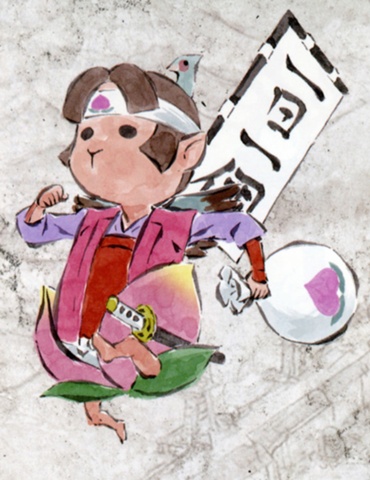
Momotaro as he appears in the game
In the story, Momotaro was born from a giant peach. He was found floating down a river by an old, childless woman while she was washing her clothes. When she and her husband opened the peach to eat it, they were shocked to find a little boy inside! The boy told them he had been sent by the gods to be their son. The couple was delighted, for they had always wanted a child, but had never been able to conceive. They named the lad Momotaro- “momo” for the peach in which they found him, and “taro” meaning eldest son.

A doll of Momotaro
When he was a bit older, young Momotaro went adventuring, with a bag of his mother’s millet dumplings strapped to his belt. Hi goal: to conquer the demon stronghold of Oni Island. On the way to the island, Momotaro encountered a trio of talking animals: a dog, a monkey, and pheasant. He shared his millet dumplings with them while he told them of his goal. The three animals volunteered to help him on his quest.
With the animals’ help, Momotaro attacked the ogres’ fort at Oni Island. They were able to defeat the small band of oni there and force them to surrender. Momotaro returned home, triumphant, with his new animal friends, the demons’ treasure horde, and the oni leader as a captive.

A statue of Momotaro
Dog, monkey, and pheasant is a common animal trio in Japanese media, referencing this folktale.

The Trainer job from Final Fantasy X-2
From left to right, Flurry the pheasant, Gogoro the dog, and Ghiki the monkey
Ninetails
Ninetails is a kitsune, which is Japanese for fox. However, in this context, a kitsune is a multi-tailed mythological fox. Kitsune are tricksters, shapeshifters, and masters of disguise and illusion. The number of tails they possess is said to be indicative of their power, with nine being the maximum. Nine-tailed kitsune are called kyuubi-no-kitsune (which just means nine-tailed fox), and are said to be immortal, practically gods.
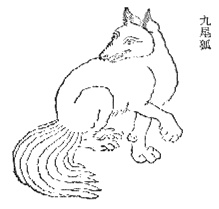
A Kyuubi, or nine-tailed fox
As Pesky Splinter posted, the Okami artbook says that Ninetails fancies herself a god. She is able to use the Celestial Brush, and fights Amaterasu in a mock-up of the Divine Realm, (the place where you meet the Brush Gods).
Kitsune are very popular in Japanese culture, much like tanooki are. However, while tanooki are regarded and jolly tricksters and symbols of good luck, kitsune’s portrayal in folklore is much more varied. They come in two general categories. The zenko (literally “good foxes”) are benevolent guardian spirits which serve Inari, the kami of fertility and agriculture. They can also be called Inari foxes. On the other end of the spectrum are the yako- “field foxes”- also called nogitsune, or “wild fox” (probably what the Tube Foxes are). These range from merely mischievous to malicious. They often possess people, or disguise themselves as humans. Some of their tricks include seducing innocent maidens, haunting people’s dreams, or leading people astray in swamps and forests with fox-fire, which they emit from their tails.
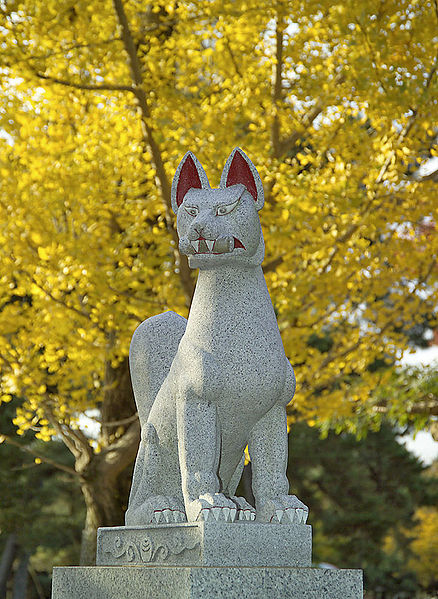
A statue of a kitsune outside a shrine to Inari

Inari appearing to a scholar, alongside his spirit-fox servants
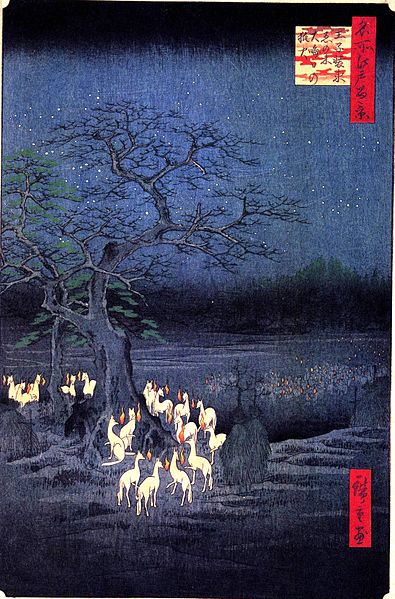
Some kitsune emitting their fox-fire to lead travelers astray (not unlike a will-o-the-wisp)
Like tanooki, there is a wealth of folklore and legends associated with kitsune, especially Kyuubi. For example, kitsune are said to possess a jewel or charm called a hoshi no tama (star ball) that houses their soul, and is the source of their power. A kitsune separated from its star ball will soon die. Those who manage to wrest a kitsune’s charm away from it are often able to extort a bargain. One such kitsune agreed to be the spiritual guardian of a man who found, and returned, its hoshi no tama.
Ninetails has such a charm: the Fox Rods! Each of her tails is topped with a different colored jewel, which corresponds to the coloration of the Fox Rods. The Tube Foxes, which also inhabit the rods, have the same coloration. Separating Ninetails from her tails, or charm, cut her off from her power. When they were returned to her, she was free to carry out her nefarious schemes!

The Fox rods. Note the similarity in their coloration to Ninetails, below

Her tails are the same color as the Fox Rods
The Pokemon Vulpix and Ninetails are kitsune, (the latter being a Kyuubi, of course) as is Tails, the two-tailed fox from the Sonic the Hedgehog games.
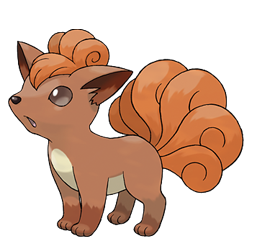

Vulpix and Ninetails

Tails the fox
A kitsune also appears as the Keaton mask in Ocarina of Time and Majora’s Mask. Additionally, in Majora’s Mask, you meet a real Keaton while wearing the Keaton Mask. The Keaton has multiple tails, and hides in the circular grass patches, making them disappear if you cut them. Multiple tails, master of illusion, trickster, yep. It’s a kitsune. (When I was younger, I thought that mask looked like Pikachu. Shows how little I know!)

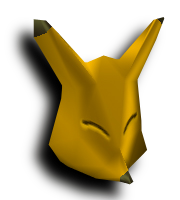
The Keaton from Majora’s Mask (left), and the Keaton Mask from Ocarina of Time and Majora’s Mask (right)
The story of Rao and Ninetails also has elements of the myth of Tamamo-no-mae, who was Emperor Konoe’s concubine. Tamamo-no-mae was beautiful, intelligent, and highly-educated. It was said there was no subject she didn’t know about. She dazzled everyone at court with her beauty and wit. The Emperor absolutely was captivated by her. Mysteriously, Tamamo-no-mae never seemed to age. She remained perpetually young and beautiful.
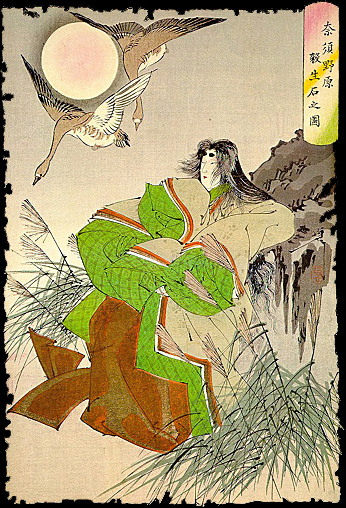
Artist’s depiction of Tamamo-no-mae
One day, the Emperor fell seriously ill. The court physicians were baffled as to the cause. Finally, the court astrologer divined the answer: the lovely Tamamo-no-mae was the cause of the Emperor’s illness! Further, he revealed that Tamamo-no-mae was actually a Kyuubi masquerading as a human. She had been conspiring with the Emeror’s enemies to beguile and poison him, and she had been draining the emperor’s life-force to maintain her own youth! Shortly after this revelation, Tamamo-no-mae suddenly disappeared from court. Emperor Konoe sent the finest warriors in the realm to hunt her down. While she was able to evade them for a time, one night Tamamo-no-mae foresaw her own death. She appeared to the warriors in a dream and begged for mercy. They refused. The next day, they found the wily fox-lady, and shot her through the heart.
In the game, “Rao” is said to be eternally young and beautiful and turns out to be a kitsune (specifically a Kyuubi) in disguise. I mentioned this in my commentary, but notice that “Rao” has one eye covered. Pesky Splinter did a nice side by side comparison in his latest artbook post. In the boss battle, when you knock of Nintails’ mask, you can see she is missing that eye. As Pinechild pointed out, an alternate pronunciation of Rao’s name in Japanese is Kyuubi . So, the Japanese version foreshadows even more heavily that Rao is not what she seems, sort of. As Tau Wedel said, it’s kind of an archaic pronunciation. It’s probably one of those things you wouldn’t get unless you were paying close attention. But that’s the mark of good foreshadowing!
Gen
Gen is based on Hiraga Gennai, an Edo period (18th century) Japanese inventor, pharmacologist, physician, author, and painter. He is known, among other things, for his experiments with static electricity.
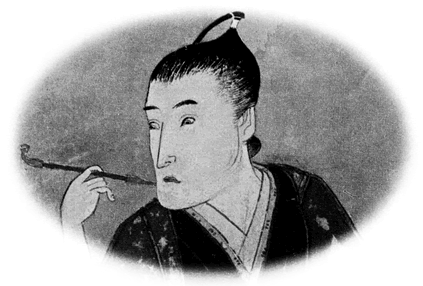
Portrait of Hiraga Gennai
cokerpilot posted:
Edit: God your fish puns... they hurt.
You know you love it!

Blame Animal Crossing. That's where I got the idea (and most of the puns)!
cokerpilot posted:
Why didn't you use vial of mist during the obstacle course in Oni Island seems like it would help
I think Pesky Splinter's right. I tried using Veil of Mist on, for example, those spiked wheels, and it didn't do shit.
DukeofCA posted:
In the PS2 version, Whirlwind is relatively easy to pull off with regularity.
Thunderbolt is still a pain in the ass.
Thank you! This is very helpful information, since I have no firsthand experience with the PS2 version. At some point I'll post my write-up on Whirlwind and Thunderbolt here, and you guys can tell me if my assessment is accurate.
